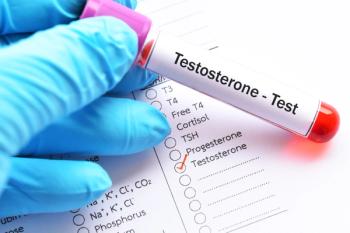
Biomarker Linked With Risk of Diabetes, Cancer Deaths
A cross-sectional association was found between plasma prostasin level and risk of diabetes and cancer mortality in patients with high blood glucose levels.
Plasma prostasin levels had a cross-sectional association with the risk of cancer mortality and the risk of
Plasma prostasin levels act as a biomarker for tumors, mostly demonstrating an association with glucose metabolism and hyperglycemia-associated tumor pathology.
The study, published in
There were 4658 participants, with a mean (SD) age of 57.5 (5.9) years; most were female (60.1%) and 361 (7.75%) had prevalent diabetes.
A cross-sectional analysis revealed an association between prostasin and diabetes, as the multivariable adjusted OR for the highest vs lowest quartile was 1.95 (95% CI, 1.39-2.76). The OR per 1 SD increase in prostasin was 1.32 (95% CI, 1.16-1.50).
A longitudinal analysis that excluded participants with prevalent diabetes (4297 participants with a mean age of 57.3 [5.9] years) found a prostasin concentration of 8.44 (0.44) NPX for men and 8.18 (0.48) for women. This analysis also found that the glomerular filtration rate (eGFR) values decreased as the prostasin levels increased.
Other risk factors demonstrated an increasing trend from the first to fourth quartiles. Prostasin levels in patients without diabetes had a positive correlation with fasting blood glucose levels, plasma insulin levels, and HOMA2-HR.
There were 702 patients who developed diabetes in a follow-up period of 21.9 (7.0) years. Participants with higher prostasin levels had a higher risk of diabetes, as the HR for diabetes in the highest and lowest quartile of prostasin was 1.76 (95% CI, 1.41-2.19) and a per 1 SD increase in prostasin had an HR of 1.23 (95% CI, 1.13-1.34). The association was reduced after adjusting for fasting blood levels or HOMA2-IR but was still significant.
Age, fasting blood glucose, and eGFR were significant factors in relation to the risk of diabetes, which was more evident in younger participants, those without impaired fasting blood glucose levels, and in participants with impaired renal function. The relationship between prostasin and diabetes was linear and not time dependent.
There were 651 participants who died from cancer in a mean follow-up period of 23.5 (6.1) years; prostasin was found to have a significant association with cancer mortality. A multivariable adjustment found that the HR was 1.43 (95% CI, 1.14-1.80) when comparing the highest vs lowest quartile of prostasin and per 1 SD increase in prostasin was 1.13 (95% CI, 1.04-1.23). These results remained the same after excluding cancer at baseline.
There was also an interaction found between prostasin and fasting blood glucose for risk of cancer mortality, where the HR for cancer mortality was 1.52 (95% CI, 1.07-2.16) and 1.11 (95% CI, 1.01-1.21) per 1 SD increase in prostasin in participants with and without impaired fasting blood glucose levels at baseline.
Predictive ability of prostasin for cancer mortality and diabetes did not significantly improve.
There were some limitations to this study. Prostasin levels were measure in arbitrary units and couldn’t be compared with absolute values. Bonferroni adjustments for biomarkers were not made. Prostasin levels measurements were made with blood samples that were frozen for over a decade, which makes the stability of the storage unclear. Serial measurements of prostasin and risk factors over time were not in this study. Diabetes type was also not determined.
The researchers concluded that plasma prostasin is a potential risk marker for development of diabetes and for cancer mortality risk in those with high blood glucose levels.
Reference
Bao X, Xu B, Muhammad IF, Nilsson PM, Nilsson J, Engstrom G. Plasma prostasin: a novel risk marker for incidence of diabetes and cancer mortality. Diabetologia. Published online August 4, 2022. doi:10.1007/s00125-022-05771-w
Newsletter
Stay ahead of policy, cost, and value—subscribe to AJMC for expert insights at the intersection of clinical care and health economics.















































